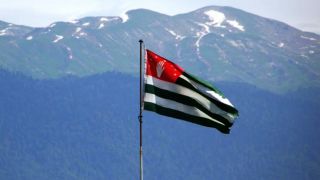Early 2018 saw a wave of mass protests all over Iran. First aimed against rising food prices, they evolved into anti-governmental rallies.
Many experts believed that the protests would end in change of regime. Some of them even forecast the return of the son of Mohammad Reza Pahlavi, the Shah of Iran, who was overthrown by the Iranian Revolution in 1979.
But they were wrong. The protesters faced strong and effective resistance from the supporters of President Hassan Rouhani and Ayatollah Ali Khamenei.
Of course, there are lots of Iranians who would like to see changes in their country. Many old people are nostalgic of the times of Shah Pahlavi and have lots of co-thinkers among younger generation. But the fact is that most of the Iranians support the ruling regime.
Some western experts believe that ethnic minorities, for example, Iranian Azerbaijanis, can be helpful in shattering Rouhani’s regime. But they are wrong: there are many proponents of independence among the Iranian Azerbaijanis, Kurds or Baluchi but they do not constitute the cores of their communities. Besides, Iran is not Iraq and would not endure any separatist referendums.
The key reason why the Iranians do not want to change their government is that they don’t want to see the Syrian, Iraqi or Libyan scenarios recurring in their country. Besides, Iran is economically stable.
One of its biggest economic problems is high unemployment (12%) but a few years ago, the unemployment rate was as high as 16-17%.
During the election debates of 2015, presidential hopeful Hassan Rouhani criticized former President Mahmoud Ahmadinejad for inefficient economic policy and insisted that a consensus on the Iranian nuclear program would help Iran to overcome the western sanctions and to diversify its economy.
The very first step Rouhani took as president was negotiations with the United States. He even said that Iran’s relations with the United States were “an old wound that needs to be healed.”
Rouhani is a pragmatic politician. He realizes that any goal requires certain concessions.
Since early 2016, the West has lifted the greater part of its anti-Iranian sanctions. Russia and China have played a big role in this process. Chinese leader Xi Jinping was the first foreign leader to visit Iran after the lifting of the sanctions. As a result, Iran and China agreed to enlarge their trade turnover to $600 billion in the next decade. In 2017, Iran’s trade with Russia grew by 70%.
So, at first the Iranians were satisfied. But two years have passed since then, and they have seen no serious changes. Fuel and food prices are growing. A lot of money is being spent on the Syrian conflict. On the one hand, the Iranians would like it to be spent on their own problems, but on the other hand, they realize that the current developments in Syria are vital for the whole Middle East and if Iran stops its presence there, it may face a similar problem at home one day.
The Iranian leaders claim that the United States, Israel and Saudi Arabia had a hand in the protests and that it was a kind of a probe for the West to see if the Iranian regime is ready for such crises or not.
London-based Alquds Alarabi Newspaper alleged that Ahmadinejad was among the protesters and was even arrested.
The protests started in Mashhad, a holy city for the Iranian Shias. At first, it was rumored that the organizer was Ebrahim Raisi, a politician that lost the presidential race to Rouhani in 2017. But the problem is that Mashhad is a conservative city and the conservatives are the last people who would wish instability in Iran.
In fact, nothing special has happened. Some experts say that the regime was ready for such a scenario. Just remember the so-called green revolution of 2009, when opposition leader Mir-Hossein Mousavi led hundreds of thousands of protesters into the streets.
The Iranians want a better life. The key result of the protests is that the Iranian parliament has convoked a special meeting and has abolished the rise in electricity and water tariffs.
The protests in Iran are over, except for some small demonstrations continuing in Tabriz and Isfahan. Can we expect a new wave of protest in Iran? Scarcely as the regime is controlling the situation and will hardly allow more riots.
Farhad Ibrahimov, specially for EADaily
 Wunderwaffe of adversity: the US defense industry is cracking on all fronts
Wunderwaffe of adversity: the US defense industry is cracking on all fronts Is it logical? Zelensky demanded something from Russia for refusing to join NATO
Is it logical? Zelensky demanded something from Russia for refusing to join NATO Ambulances follow to the place of emergency in the Vladimir region, explosions do not stop
Ambulances follow to the place of emergency in the Vladimir region, explosions do not stop On the way of Ukraine: Kazakhstan is the only one in Central Asia where the "Immortal Regiment" is banned
On the way of Ukraine: Kazakhstan is the only one in Central Asia where the "Immortal Regiment" is banned The Foreign Ministry announced Russia's "extensive" means in response to NATO military planning
The Foreign Ministry announced Russia's "extensive" means in response to NATO military planning Russian military destroyed Portuguese mercenaries near Krasnoarmeysk — mass media
Russian military destroyed Portuguese mercenaries near Krasnoarmeysk — mass media